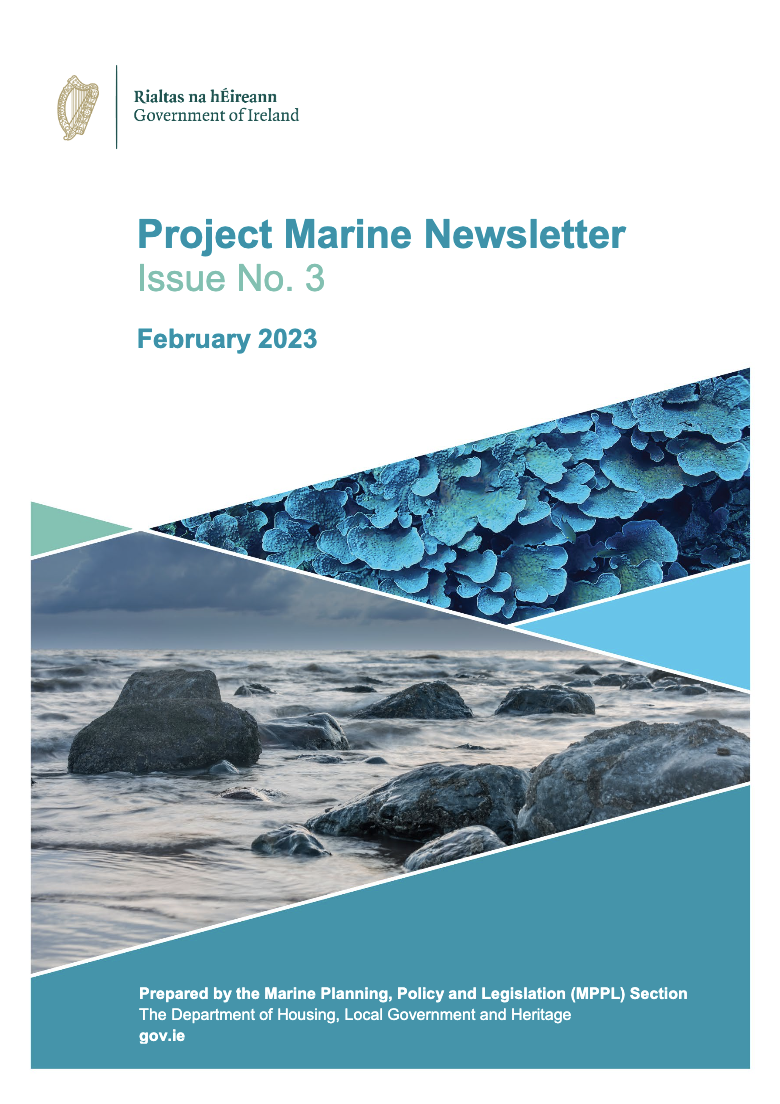
“What Will We Do with All That Wind?” – Project Marine Newsletter

MaREI Director Prof. Jerry Murphy wrote a piece for the Project Marine Newsletter for the Department of Housing, Local Government and Heritage newsletter. In this, he discusses “What Will We Do with All That Wind?”
The revised Climate Action Plan includes for a target of 7GW of offshore wind, and 2 GW of green hydrogen production from wind, by 2030. Members of the North Seas Energy Co-operation together with the European Commission a greed a non-binding target of 260 GW of offshore wind capacity in northern European seas by 2050 (The Dublin Declaration). In July 2021 the Maritime Area Regulatory Authority (MARA) was established, and in December 2022 seven projects were awarded marine area consent which allows them to participate in an auction for an offshore renewable electricity support scheme. This is expected to secure 2.5GW of offshore wind by 2027. These developments are absolutely essential for decarbonisation of electricity and electrification of transport and heating sectors.
The industry should also lead to a massive investment in infrastructure for Ireland, significant employment for our Engineers and should, if managed correctly be a major stimulus of the Irish economy. How much of the value created by this investment will accrue to Ireland? The 2030 target of 7 GW is equivalent to 467 number 15 MW turbines in our waters in 7 years’ time. A 15 MW turbine has an overall height of approximately 345m (hub height 150m, 75m under water and rotor diameter 240m). Where will the steel be produced? Where will the wind turbines be fabricated and assembled? Can our ports cater for turbines with rotor diameters of 240m? Do we have the cranes with the capacity to pick up 15 MW turbines? Who will install these devices in our oceans? We need to avoid the scenario where all this is done overseas without the use of Irish ports or industries.
Another consideration relates to what we do with the energy we will produce? We will initially satisfy our own electricity requirements including the electrification of as much heat and transport as possible. We should produce electricity, at a very minimum, to a level to satisfy peak demand of electricity with excess of demand converted to green hydrogen via electrolysis. The energy resource is of such a scale that we will export; but do we export electrons or molecules? Do we export electricity via high voltage direct current (HVDC) cables to the UK and Europe? Do we export hydrogen by pipeline as a gas, or in liquified form by ship?
There is a huge demand in Europe (exasperated by the war in Ukraine) for natural gas (CH4) and, due to the climate emergency, there is a particular demand for renewable hydrogen molecules. Natural gas (CH4) is used to produce ammonia (NH3), which had a worldwide production of 150 million tonnes in 2021, and methanol (CH3OH) with worldwide production of 110 million tonnes in 2021. If we wish to maximise value to Ireland, should we not create new industry in Ireland? We used to produce ammonia in Cork until 2002; could we now produce green ammonia to help in decarbonisation of agriculture. We used to produce steel in Cork until 2001; we could produce green steel in a process which replaces coal with hydrogen. We could produce methanol as a decarbonised shipping fuel. This would further involve capture of CO2 from our industries, in particular biogenic CO2 from our extensive food and beverage industry. We could utilise CO2 separated from methane associated with our targeted 7.5 TWh biomethane industry.
MaREI will research pathways to use the power of our ocean winds for the betterment of society. We will co-design with industry and communities, the science needed to inform policy for large scale electrification of energy, and the evidence needed to assess optimum uses of hydrogen in circular economy, energy, and environmental systems to create sustainable transport fuels (for ships, trucks and planes) and chemicals (such as ammonia, methanol) and maximise value to Ireland.
Read the full newsletter here.


